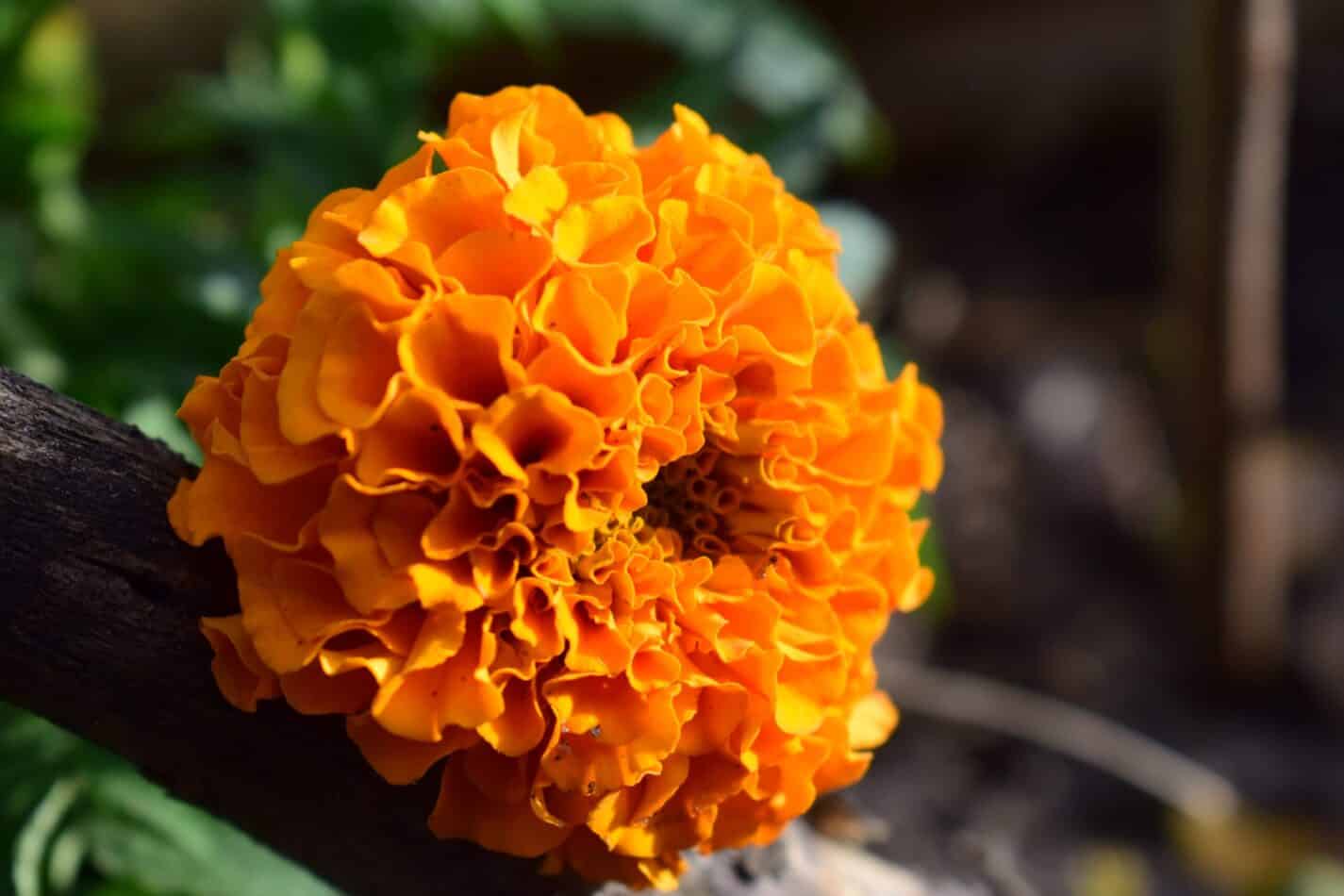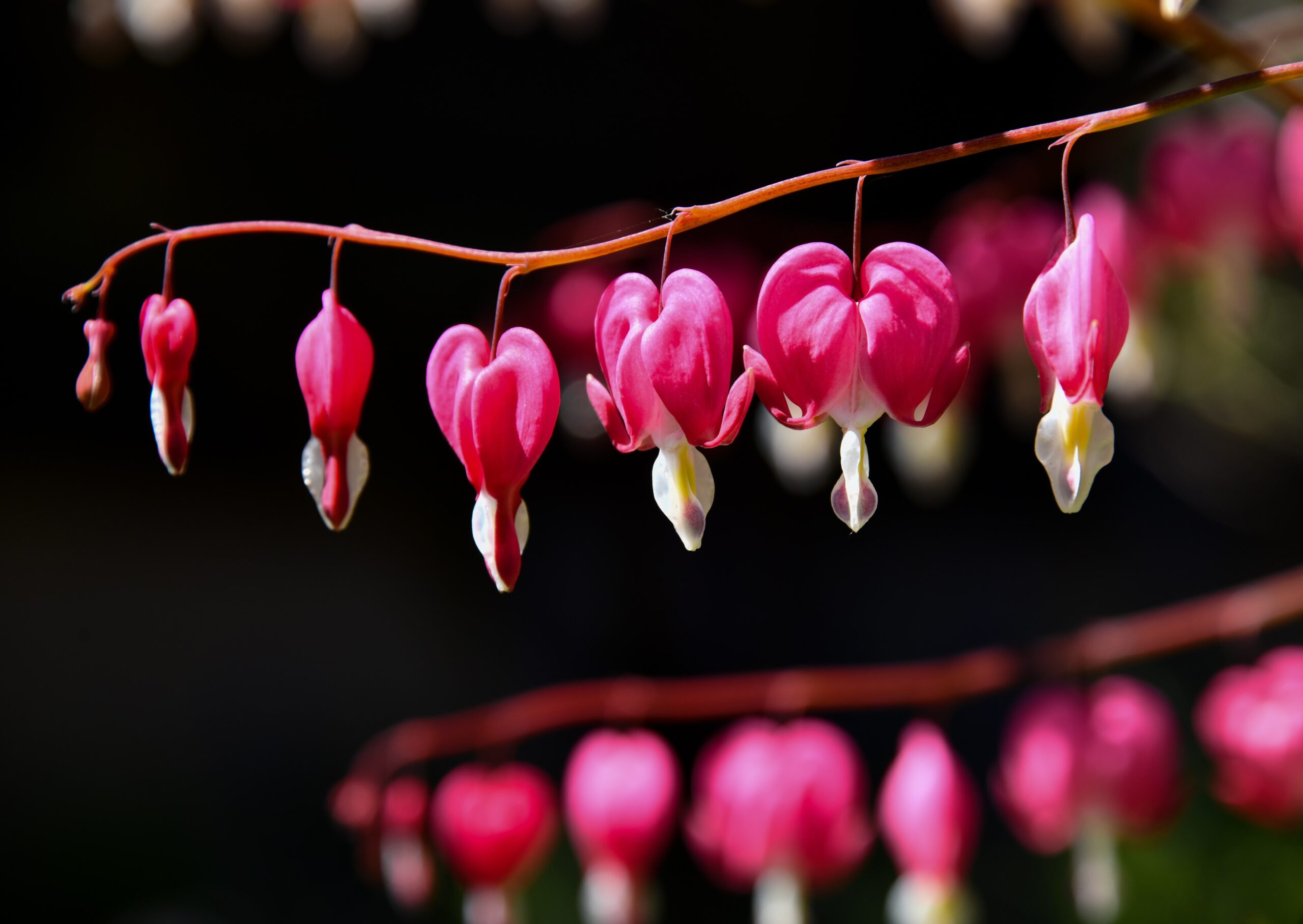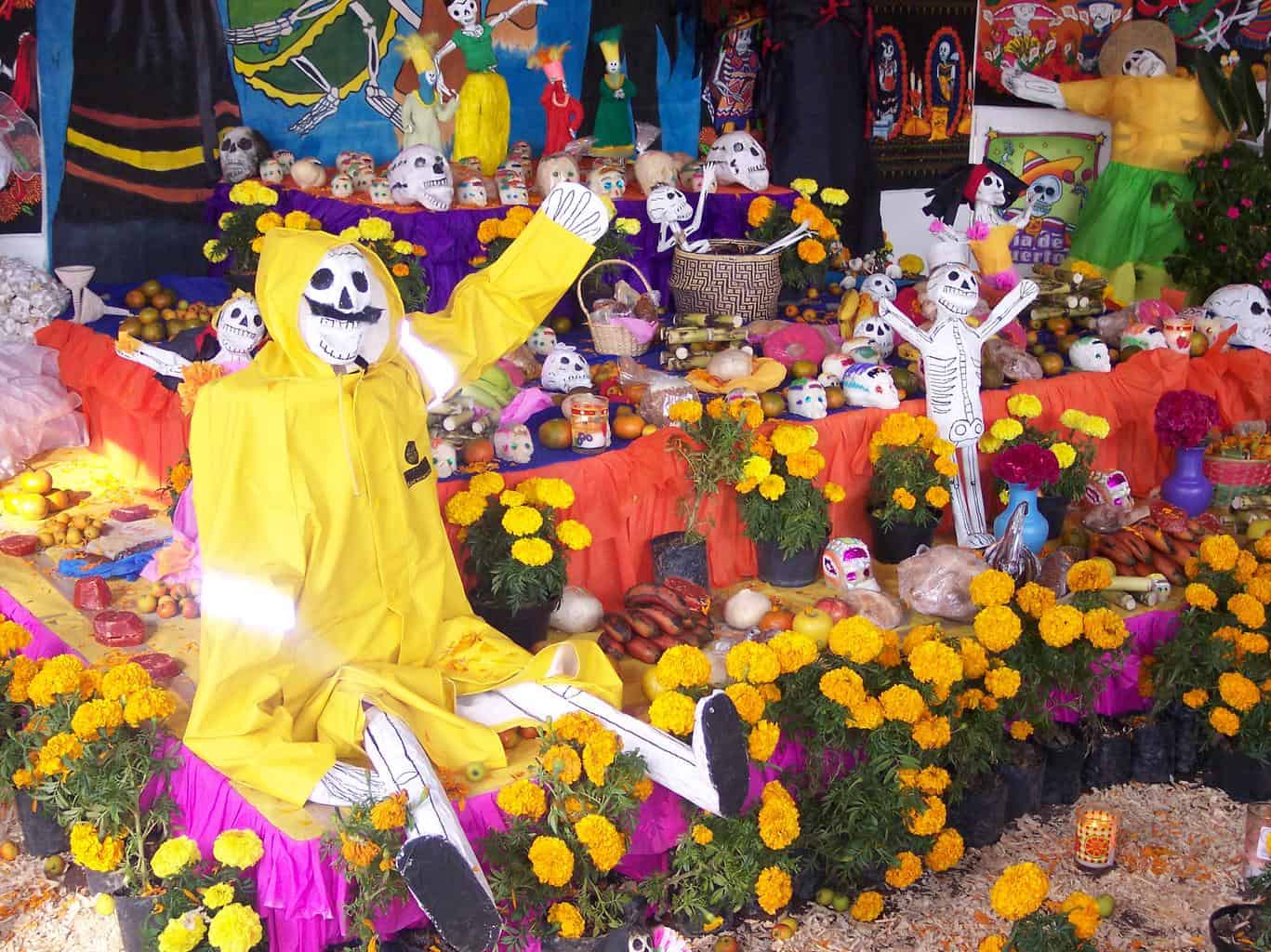Buy These Beautiful Marigolds on Amazon>>>
Historical Significance
The historical significance of marigolds spans across ancient civilizations, from the Aztecs and Mayans to the Incas and beyond. These vibrant flowers held a sacred and revered place within the cultural and religious practices of these civilizations, embodying profound symbolism and spiritual significance.
Aztec Civilization
In the ancient Aztec civilization, marigolds, known as cempasúchil or flower of the dead, played a pivotal role in religious rituals and ceremonies. The Aztecs believed that marigolds possessed the ability to communicate with the spiritual realm and guide the souls of the departed. During the festival of Mictecacihuatl, dedicated to the goddess of the underworld, marigolds were used to create intricate floral altars and vibrant garlands, adorning temples and sacred spaces. These displays of marigolds were believed to provide a welcoming path for the spirits of the deceased, facilitating their journey back to the mortal realm.
Mayan Civilization
Similarly, the Mayans held marigolds in high esteem, associating them with their sun god and lunar goddess. The golden hues of marigolds were reminiscent of the sun’s radiant energy and the moon’s mystical glow. Marigolds were used in religious ceremonies, where they were offered as gifts to deities and spirits, symbolizing devotion and reverence. The Mayans recognized the interconnectedness of life, death, and the afterlife, and marigolds served as a bridge between these realms.
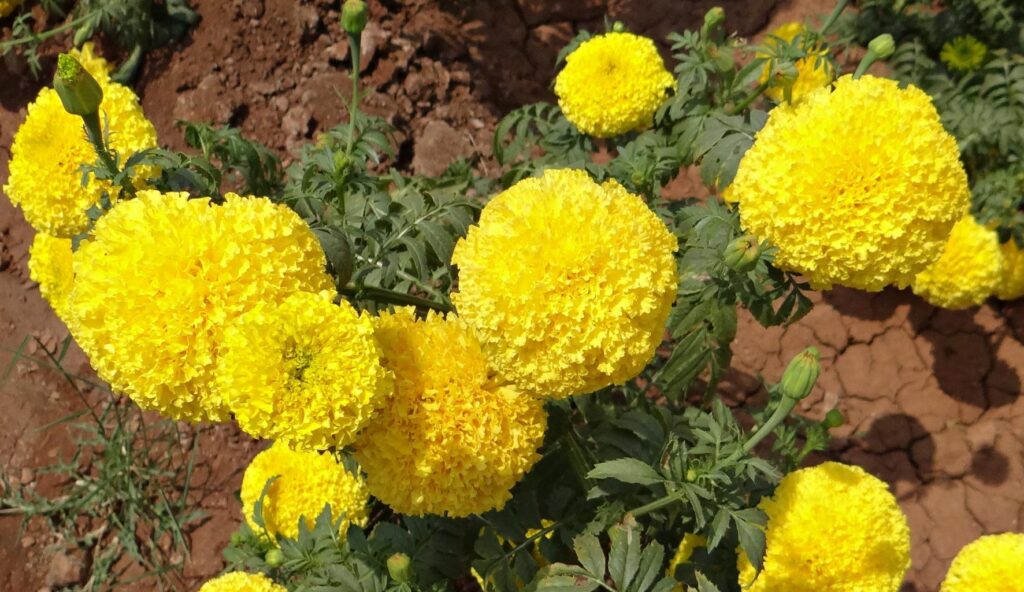 Inca Civilization
Inca Civilization
In the Inca civilization, marigolds were also considered sacred and were used in various religious and ceremonial practices. The Incas attributed spiritual significance to marigolds, associating them with the sun and using their vibrant petals to honor Inti, the sun god. Marigolds were offered as symbols of gratitude and devotion, expressing reverence for the divine and the natural world.
Across these ancient civilizations, marigolds were not only used in religious and spiritual contexts but also held cultural significance in daily life. The vibrant colors of marigolds were used to adorn textiles, pottery, and ceremonial attire, reflecting their deep-rooted presence in art and symbolism. Their essence permeated various aspects of ancient societies, serving as a reminder of the cyclical nature of life, the fleeting beauty of existence, and the connection between the mortal and the divine.
Today, the historical significance of marigolds continues to be celebrated and revered. Whether it is the vibrant displays of marigolds during the Mexican Day of the Dead or the incorporation of marigold motifs in traditional art forms, these flowers carry the echoes of ancient civilizations and their profound understanding of life, death, and the spiritual realm. Marigolds serve as a timeless link to our collective past, reminding us of the rich cultural tapestry that has shaped our understanding of the world and our place within it.
Symbolism in Different Cultures
Symbolism in different cultures holds a captivating array of meanings, and marigolds, with their sun-like radiance, love and devotion, as well as their protective qualities and association with good fortune, embody a rich tapestry of interpretations across the globe.
The sun-like radiance of marigolds resonates deeply in various cultures. With their vibrant yellow and orange hues, these radiant blossoms are often associated with the sun itself. In many traditions, marigolds symbolize warmth, energy, and the life-giving power of the sun. Their vibrant colors and glowing petals are seen as representations of hope, optimism, and positivity. Just as the sun illuminates the world, marigolds illuminate the spirit, bringing a sense of joy and brightness to those who behold them.
-
Love and devotion
Love and devotion find a place within the symbolic realm of marigolds in many cultures. In the intricate language of flowers, marigolds were revered as symbols of deep affection and unwavering commitment. During the Victorian era, when floriography flourished, marigolds conveyed messages of undying love and faithfulness. Lovers exchanged these blooms as tokens of their devotion, using the vibrant petals to express their heartfelt emotions. Marigolds became cherished messengers of love, carrying sentiments that transcended words.
-
Protective Qualities
The protective qualities attributed to marigolds have also made them symbols of safeguarding in certain cultures. These resilient flowers are believed to possess the power to ward off negative energies, evil spirits, and pests. Planted around homes and gardens, marigolds act as guardians, creating a shield against malevolent forces. The strong scent emitted by marigolds is thought to repel insects, making them a natural insecticide. This protective aspect extends beyond physical realms, as marigolds are seen as guardians of the spirit, offering solace and protection to those who seek their presence.
-
Good Fortune and Prosperity
Marigolds have long been associated with good fortune and prosperity, intertwining their symbolism with abundance. Their vibrant colors are believed to attract positive energies, inviting prosperity and luck into people’s lives. In various cultures, marigolds are planted and displayed during celebrations and ceremonies to invoke blessings and ensure a prosperous future. The radiant blooms are seen as harbingers of good fortune, encouraging a sense of abundance and wealth in both material and spiritual realms.
Through their symbolism in different cultures, marigolds reveal themselves as vessels of multiple interpretations. They represent the sun’s life-giving energy, ignite the flames of love and devotion, offer protection against negative forces, and invite good fortune and abundance into the lives of those who embrace their presence. Marigolds transcend boundaries, connecting people through shared meanings and providing a glimpse into the beautiful diversity of human cultures.
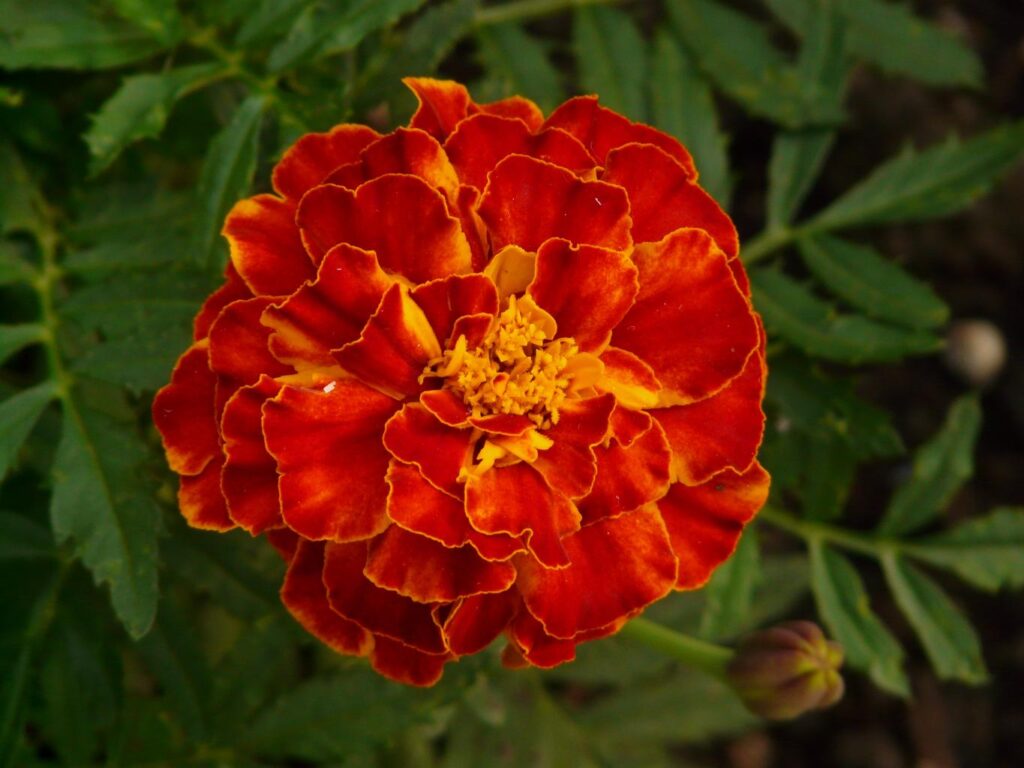
Remembrance and Day of the Dead
Remembrance and Day of the Dead, both rich in cultural significance, hold a special place in the hearts of people around the world. Among the myriad of traditions and symbols associated with these observances, marigolds take center stage in the enchanting Mexican celebration known as Día de los Muertos, or the Day of the Dead. Embodied in the vibrant hues of marigolds, the essence of life and death intertwine, creating a captivating tapestry of remembrance and honoring the departed.
In the intricate tapestry of Day of the Dead, marigolds, known as cempasúchil or flor de muerto in Spanish, hold profound symbolism. Their radiant petals, glowing like the sun itself, embody the essence of vitality and resurrection. These golden flowers are meticulously woven into the fabric of this age-old tradition, where the boundary between the mortal realm and the spiritual world is believed to blur.
During this sacred holiday, families and communities come together to commemorate their departed loved ones, transforming graveyards into resplendent spaces of remembrance. The presence of marigolds is ubiquitous in this ritualistic transformation. Their vivid orange and yellow blossoms adorn the elaborate altars known as ofrendas, which are meticulously constructed to honor and welcome the souls of the deceased.
With great care and devotion, marigolds are meticulously arranged in intricately designed patterns upon these altars. Their brilliant colors and delicate aroma serve as a beacon, guiding the spirits of the departed back to their earthly homes. It is believed that the vibrant petals and their fragrance possess the power to summon the souls, allowing them to embark on a spiritual journey and reunite with their beloved ones, even if only for a fleeting moment.
 Beyond the ofrendas, marigolds permeate the cemeteries themselves, transforming the hallowed grounds into ethereal landscapes. Graves are adorned with cascades of marigold petals, forming pathways that guide the spirits to the earthly realm. As dusk descends, the glow of candlelight dances with the gentle rustle of marigold petals, imbuing the atmosphere with a mystical aura.
Beyond the ofrendas, marigolds permeate the cemeteries themselves, transforming the hallowed grounds into ethereal landscapes. Graves are adorned with cascades of marigold petals, forming pathways that guide the spirits to the earthly realm. As dusk descends, the glow of candlelight dances with the gentle rustle of marigold petals, imbuing the atmosphere with a mystical aura.
The presence of marigolds during Day of the Dead extends beyond their aesthetic appeal; it represents a profound connection between the living and the deceased. These delicate flowers, intertwined with the fabric of Mexican culture, symbolize not only the transience of life but also the enduring power of love and remembrance.
As families gather, stories of the departed are shared, laughter mingles with tears, and marigolds stand as a testament to the undying bond that transcends mortality. In their petals lies the essence of a vibrant celebration, a celebration that embraces the beauty of life and death, inviting the souls of the departed to be remembered, cherished, and celebrated year after year.
Healing and Medicinal Properties
Beyond their symbolic significance, marigolds have been used for their medicinal properties for centuries. The flowers and leaves of certain marigold species contain compounds with anti-inflammatory, antifungal, and antibacterial properties. They have been utilized in traditional medicine to treat various ailments, including skin conditions, digestive issues, and minor wounds.
Marigolds are much more than just beautiful flowers; they are vessels of meaning and symbolism deeply rooted in human culture and history. From their association with the sun’s radiance to their role in rituals, love, protection, and remembrance, marigolds continue to captivate and inspire people worldwide. As we gaze upon the marvelous marigold, let us appreciate its vibrant colors and embrace the diverse interpretations and significance it holds in our lives.
What we love from Amazon this week
Buy these wonderful flowers directly from Amazon:


